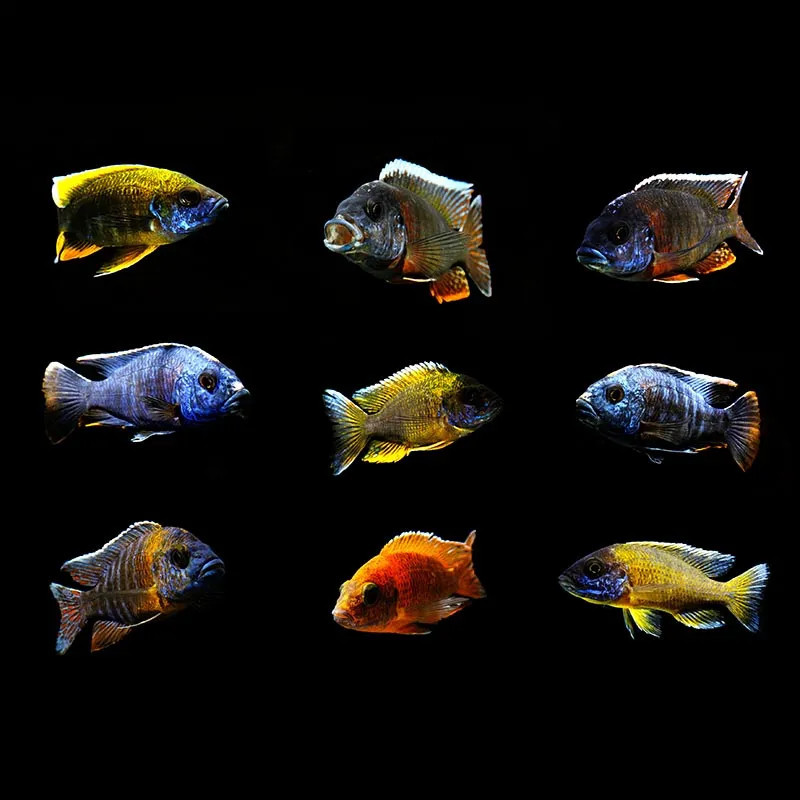Stocks Available
Electiric Blue Ram - Medium
SKU:116235
MICROGEOPHAGUS
1 INCH

Stock Available
Introduction:
Common Names: Peacock Cichlid, African Peacock.
Natural Habitat: Native to Lake Malawi in East Africa. Found in sandy and rocky substrates, typically in intermediate zones where they forage for food.
Physical Characteristics:
Appearance: Known for their dazzling coloration, males exhibit bright hues of blue, red, yellow, and orange, often with metallic sheen and unique patterns depending on the species. Females are typically less colorful, ranging from silver to beige.
Size: Males grow up to 4-6 inches (10-15 cm), while females are slightly smaller.
Lifespan: 6-8 years with proper care.
Habitat Requirements:
Tank Size: Minimum of 55 gallons for a group; larger tanks (75+ gallons) are recommended for multiple males.
Water Conditions:
Temperature: 76-82°F (24-28°C).
pH: 7.8-8.6 (alkaline).
Hardness: 10-20 dGH.
Aquascaping: Mimic their natural environment with sandy substrate and rock formations to provide hiding spots and territories. Ensure ample swimming space in the mid-water column.
Diet:
Primary Diet: Carnivorous; feeds on small invertebrates and crustaceans in the wild.
Supplemental Feeding: High-quality cichlid pellets or flakes, supplemented with frozen or live foods such as brine shrimp, bloodworms, and krill. Avoid high-protein or fatty foods to prevent health issues.
Feeding Frequency: 1-2 times daily in moderate amounts.
Compatibility:
Temperament: Generally peaceful for a cichlid but can become territorial, especially during breeding.
Suitable Tank Mates: Other peaceful or semi-aggressive African cichlids such as Yellow Labs (Labidochromis caeruleus), certain Mbuna species, or Synodontis catfish.
Incompatibilities: Avoid overly aggressive species or much larger fish that may intimidate or harm them.
Care Level:
Difficulty: Moderate; requires stable water parameters and careful monitoring of tank dynamics to avoid territorial disputes.
Health Monitoring: Keep an eye out for Malawi bloat, fin rot, or ich. Regular water changes and high water quality are crucial for their health.
Breeding:
Breeding in Captivity: Achievable with proper care. Peacock Cichlids are maternal mouthbrooders.
Spawning: Males establish and defend territories, displaying vibrant colors to attract females. Females lay eggs on a flat surface, which they collect in their mouths for incubation (21-28 days).
Tips: Provide multiple females per male to reduce aggression and encourage breeding. Fry can be fed finely crushed flakes or specialized fry food.
Economic Considerations:
Market Demand: Highly sought after for their stunning colors and relatively peaceful temperament.
Pricing: Moderate to high; prices vary depending on species, size, and color intensity.
Conclusion:
The Peacock Cichlid is a visually striking species that adds vibrant color and dynamic behavior to any aquarium. Their peaceful temperament (relative to other cichlids) makes them a great choice for intermediate aquarists. With proper care, they can thrive and become the centerpiece of your aquarium.
Data sheet
16 other products in the same category:
Customers who bought this product also bought: